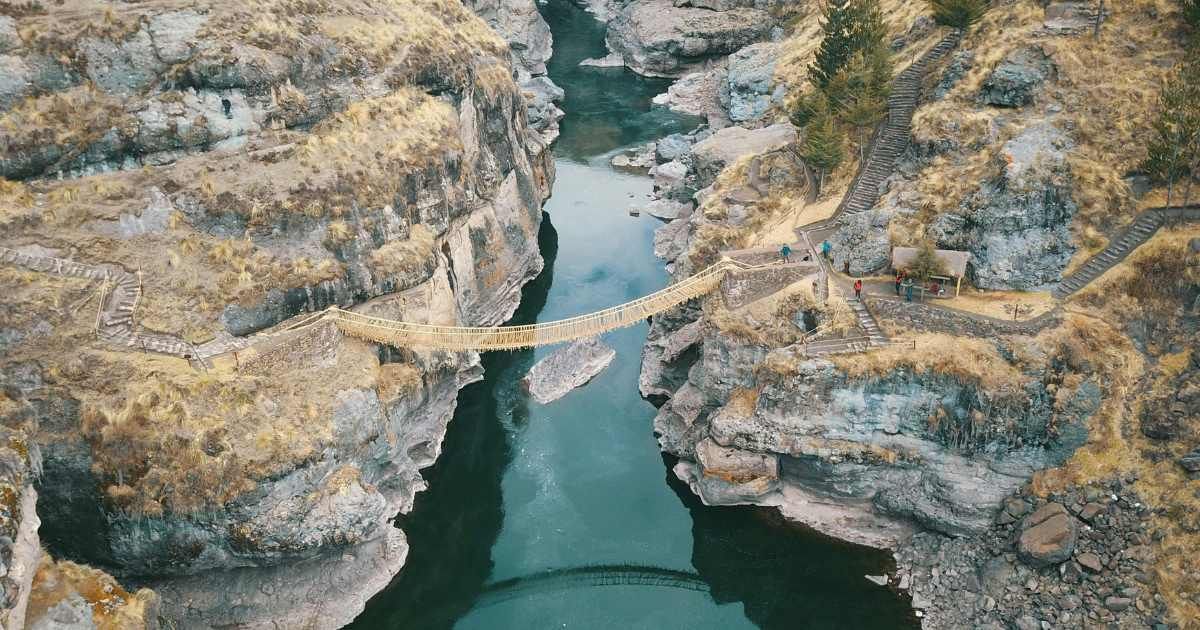Researchers Claim When the Earth’s Mantle Burst It Formed a Land Bridge That Connected Asia and Africa 20 Million Years Ago

The evolutionary trajectory undertaken by every being has been impacted by activities that have taken place across Earth's history. A study published in Nature Reviews Earth & Environment focuses on a formation that impacted the migration pattern of many animal ancestors, and eventually influenced their evolution.

A large land bridge that connected Asia and Africa some 20 million years ago is the study's main subject, stated Texas Geosciences. The formation supposedly ran across the present-day Arabian Peninsula and Anatolia. Experts think that the bridge facilitated the movement made by the early ancestors of animals such as giraffes, elephants, rhinoceroses, cheetahs, as well as humans, between the two continents. The study examined the bridge's formation with the help of several models that the experts created of the past landform.
The models suggested that some 50 to 60 million years ago, a slab of rock slid into the Earth's mantle. This slab created a conveyor belt of sorts, which contained boiling hot rocks in an underground plume. Eventually, the rocks reached the surface after 30 million years. This phenomenon, along with the clashing of tectonic plates, produced changes in the surface that closed the ancient Tethys Sea. More importantly, it created a formation that bridged the distance between Asia and Africa.

| Photo by Hendrik Cornelissen)
The formation ended Africa's 75 million-year isolation period, stated Bioengineer. This isolation sheltered the climatic and evolutionary progression on the continent. The bridge's formation allowed the possibility of intercontinental faunal exchanges. The study claimed this permitted more gene flow and diverse evolutionary pathways. Migration conducted by the primitive animals also brought topographical changes to the surface, as per the study.
Researchers further claim that mantle dynamics dictated the evolutionary pace of various faunal species. Experts claim that without the mantle dynamics, the shallow seaway separating the two continents would have taken some more time to close. If the bridge didn't come into existence, then the evolutionary changes that the primitive fauna species underwent would have been delayed. This delay could have altered the evolutionary pathways ultimately taken by these creatures, even humans. The anatomical features that are present today in several species would possibly not have been there.
Before the isolation, many primitive primates from Asia went to Africa. The isolation caused them to become extinct in Asia, but they continued to diversify in Africa. After the formation of the land bridge, they repopulated Asia. This trajectory and habitation pattern change completely if the timing of any of these events, from isolation to creation of the land bridge, gets altered.
Earth’s Fiery Core Sculpted Land Bridge, Rewriting Mammal Migration, Paving Ancient Path for Elephants, Giraffes, and Human Ancestors. A mantle plume, rising millions of years ago, uplifted the Arabian Peninsula and Anatolia, forging a land bridge between Africa and Asia.
— Nirmata (@En_formare) April 22, 2025
This… pic.twitter.com/qEsZSLygIe
The elevation of the Arabian Peninsula also affected ocean circulation, stated Phys.org. The temperature of nearby oceans increased, which in turn widened the temperature changes within seasons. This caused the region from North Africa to central Asia to become more arid. Researchers believe that the bridge was the final trigger that caused the Sahara to become a desert. These changes also increased the intensity of the monsoon season in Asia.
The study showcases how mantle dynamics had a prominent role in shaping the present-day world. Not only the features of several creatures, but also the climate experienced by present-day populations, change drastically if a formation is delayed or accelerated in history.